Key Specs
Since many of our users are going to want to run different OSes on this, we wanted to give some of the key hardware specs. There is a lot on these machines that are customizable, but this at least gives you some sense of what hardware is available. If you want to know if your hardware is compatible with your OS, this list should help do that tie-out.
CPU Support
Here are the officially supported CPUs for the unit:
- Intel Celeron G4900T (2 Cores/ 2 MB/ 2T/ up to 2.9GHz/ 35 W)
- Intel Pentium G5400T (2 Cores/ 4 MB/ 4T/ up to 3.1GHz/ 35 W)
- Intel Pentium G5500T (2 Cores/ 4 MB/ 4T/ up to 3.2GHz/ 35 W)
- Intel Core i3-8100T (4 Cores/ 6 MB/ 4T/ up to 3.1GHz/ 35 W)
- Intel Core i3-8300T (4 Cores/ 8 MB/ 4T/ up to 3.2GHz/ 35 W)
- Intel Core i5-8500T (6 Cores/ 9 MB/ 6T/ up to 3.5GHz/ 35 W)
- Intel Core i5-8600T (6 Cores/ 9 MB/ 6T/ up to 3.7GHz/ 35 W)
- Intel Core i7-8700T (6 Cores/ 12 MB/ 12T/ up to 4.0GHz/ 35 W)
If you are looking for Intel HD 630 graphics, you will want the Pentium G5500T or better. The two lower-end parts have UHD 610 graphics.
RAM Support
- Up to 32GB in 2x DDR4-2666 SODIMMs
Note we did get our 2x 32GB sticks working for 64GB in this system.
Storage Support
- 2.5″ SATA with Bracket
- 2x M.2 PCIe Gen3 for NVMe SSDs
Networking (Wired)
- Intel i219LM
WiFi Support (Optional)
-
Intel 9560 802.11ac 2×2 with Bluetooth M.2 Combo Card vPro
-
Intel 9560 802.11ac 2×2 with Bluetooth M.2 Combo Card non-vPro
-
Realtek RTL8821BE 802.11ac 2×2 with Bluetooth M.2 Combo Card
-
Realtek RTL8723CE 802.11ac 1×1 with Bluetooth M.2 Combo Card
Chipset
- Intel Q370 PCH
USB Ports
- 1x USB 3.1 Gen1 Front (Type-A)
- 1x USB 3.1 Gen2 Front (Type-A)
- 1x USB 3.1 Gen2 Front (Type-C)
- 2x USB 3.1 Gen2 Rear (Type-A)
- 2x USB 3.1 Gen1 Rear (Type-A)
OSes From Factory
- Windows 10 Home (64-bit)
- Windows 10 Pro (64-bit)
- FreeDOS 1.2
The OS section can be a big deal. Sometimes the units are advertised as supporting Windows 10, but one gets a Windows 10 Home license. If you want to, or may want to, run Windows 10 Pro, knowing exactly which OS is on the device is ultra-important. Although it did not come with Linux, we had our system running Proxmox VE as a Linux virtualization node.
Also, the Q370 chipset supports vPro. We also have a CPU that supports vPro (Core i5-8500T) and vPro is mentioned in a lot of the ProDesk 600 G4 Mini documentation. Still, our unit did not support vPro and we noticed that the Intel 8th Gen Core i5 sticker did not mention vPro. Our advice is to check this sticker as a good indication of whether your system supports vPro.
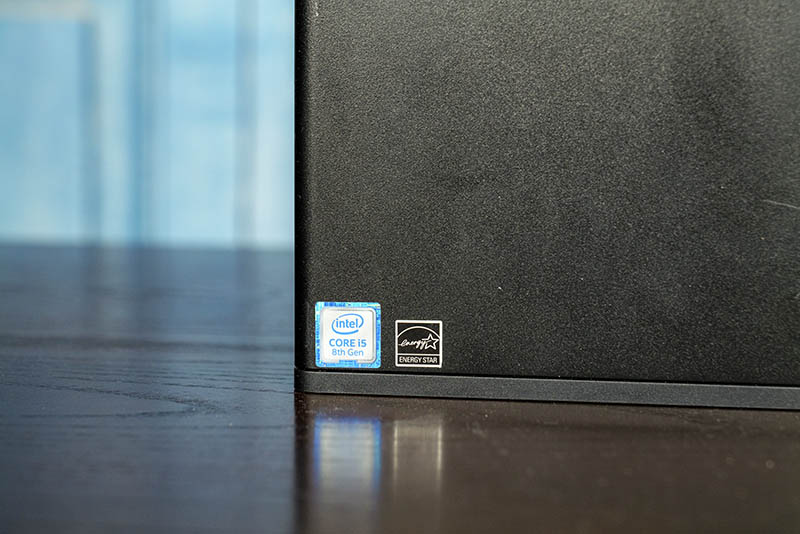
Note: These systems sometimes change specs mid-generation. If you find another spec sheet with items you think we should add, please let us know in the comments.
Next, we are going to look at the performance and power consumption before getting to our final words.
Dell OptiPlex 3050 Micro Performance and Power Consumption
Instead of going through the entire Linux-Bench test suite, we are going to show a few performance and power numbers here to give a general sense of performance. We actually planned to do storage testing, but then we realized that there was a huge variability in terms of what drives could be found in machines.
Python Linux 4.4.2 Kernel Compile Benchmark
This is one of the most requested benchmarks for STH over the past few years. The task was simple, we have a standard configuration file, the Linux 4.4.2 kernel from kernel.org, and make the standard auto-generated configuration utilizing every thread in the system. We are expressing results in terms of compiles per hour to make the results easier to read:
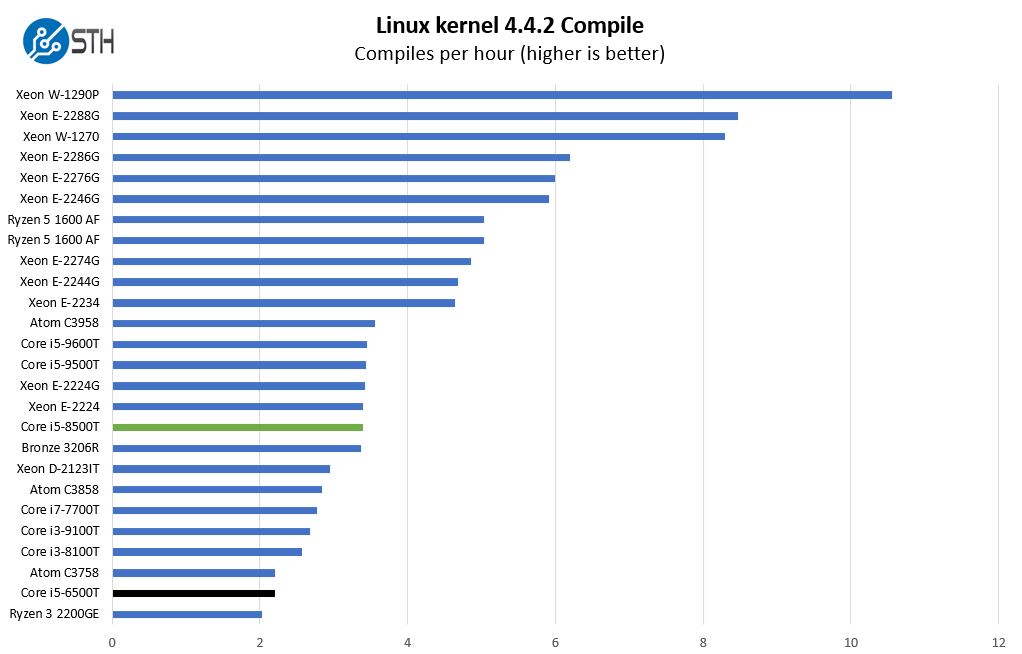
We have been using this to show the delta between the Core i5-6500T (4C/4T) and the Core i5-8500T (6C/6T). We are getting a fairly massive performance delta as Intel added more cores in this segment.
7-zip Compression Performance
7-zip is a widely used compression/ decompression program that works cross-platform. We started using the program during our early days with Windows testing. It is now part of Linux-Bench.
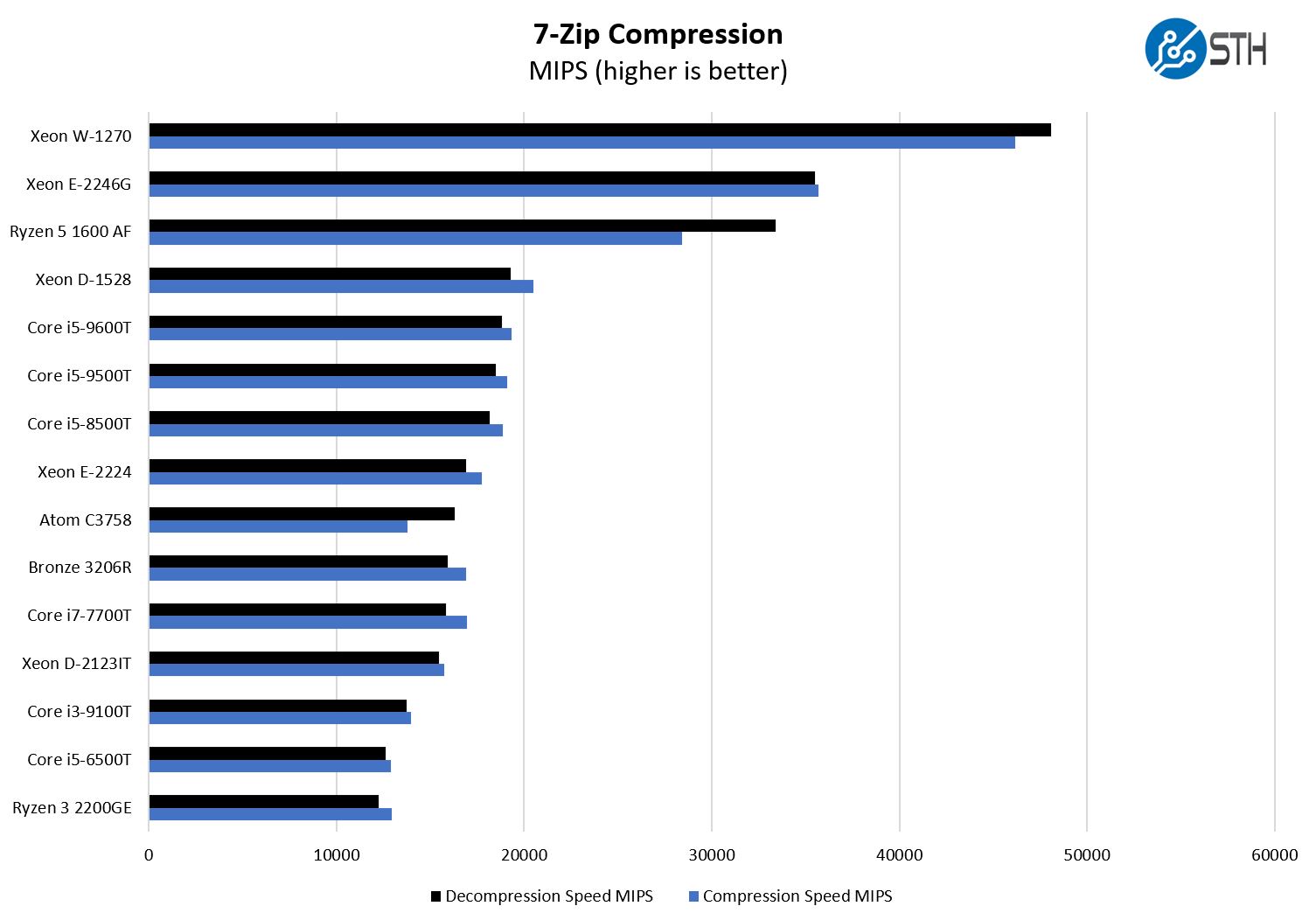
Here we wanted to show performance compared to some of the higher-end Core i7-7700T solutions just to demonstrate that physical cores present in new generations can make a bigger impact than stepping “down” to an 8th Gen Core i5 versus a 7th Gen Core i7.
OpenSSL Performance
OpenSSL is widely used to secure communications between servers. This is an important protocol in many server stacks. We first look at our sign tests:
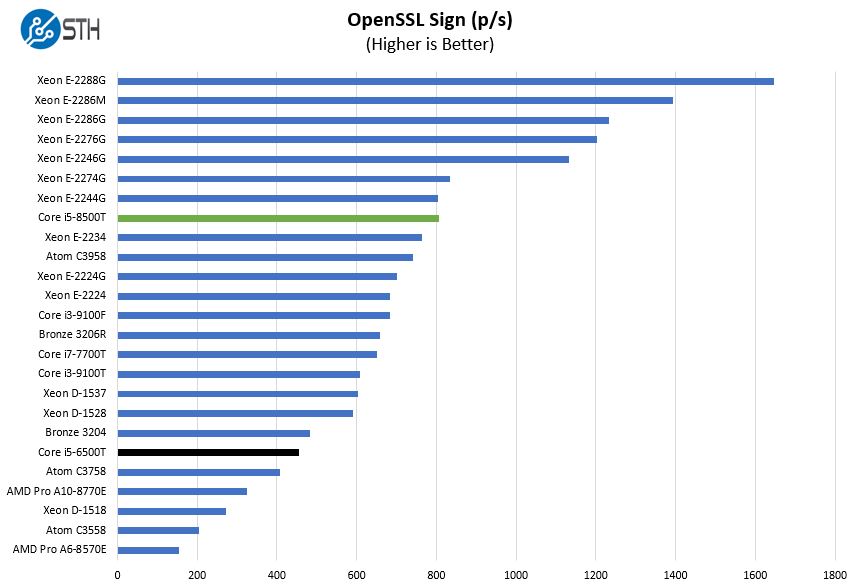
Here are the verify results:
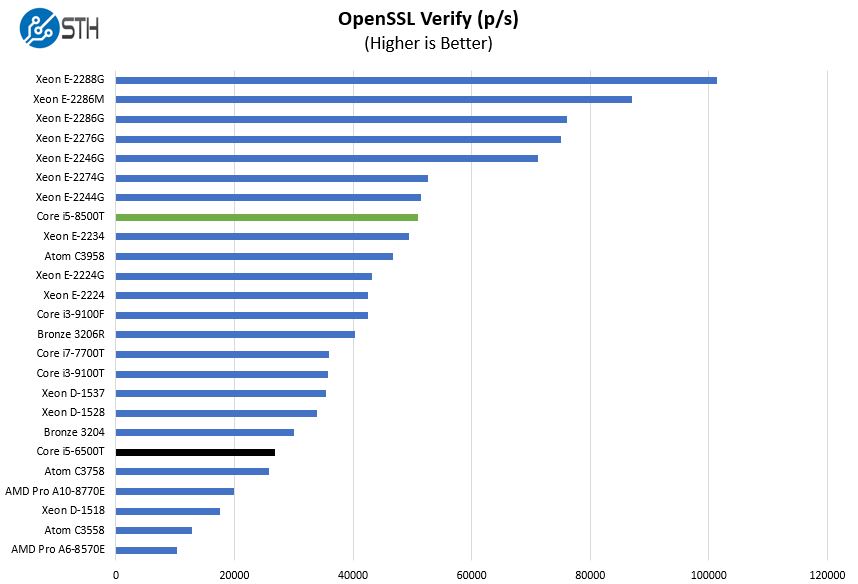
We purchased this system for about the same amount as the Dell OptiPlex 3050 Micro with the Core i5-6500T. Indeed, most of the systems we have purchased for the Project TinyMiniMicro have had Core i5-6500T’s or i5-8500T’s so this comparison is perhaps one of the most important we can make. The impact of AMD Ryzen entering the market increased performance to an enormous extent within the Intel Core i5 family just because Intel needed to respond to competition.
Next, we are going to discuss power consumption before getting to our final words.




I’m too lazy to look for the 400 and 600’s, but at least the 700 and 800 lines have a usb-c addon card to replace the dp/serial/hdmi options. You then have one usb-c in the front and one behind.
Hp seems to be the only TMM allowing some flexibility.
On the second page, the second heading says “Dell OptiPlex 3050 Micro Performance and Power Consumption” when this article is about HP ProDesk 600 G4?
Also, would you mind looking into the Acer Veriton N series? They don’t get much coverage and it should be quite comparable to the “big three” machines.
I have bought the ProDesk G4 600 SFF and find it hard keeping it cool under low load. Maybe the smaller variety is better at cool due to reduced internal volume and better airflow, IDK. Just a note.
I’ve got the same machine with the i7 processor and running proxmox on it and would like to make a memory upgrade. Running dmidecode tells me that the bios reports supporting a max of 32G of ram but you seem to have got it to work with 64G, is it possible to get details on how you managed it? Would be great to know if it’s possible before I got out and buy new ram modules. Did you just add 2x32G or was there something like a bios upgrade? Thanks!
Well? What happened here?
Hi. I just removed my SATA drive and tray from an Elitedesk 800 G5 Mini. The manual says to “Lift the connector latch on the system board (1), and then disconnect the hard drive cable using the pull tab on the cable (2).” I can see the connector clearing in your photos. I tried many ways and could not get the latch to release. I did manager to remove the cable anyway. But I doubt I could re-insert it without getting the latch to open. Do you have any idea/description details on how to lift the latch? It is a white plastic thing sitting atop a black connector that is soldered to the MB. Thanks!
David.
As Im a year and a bit late. You likely worked this out, by now.
The white part of the connector is pulled straight upwards. It is not the flipping kind.
Pull up to release. Push in the cable. press down to lock the cable in place.
As an addendum, to this article.
On the Prodesk 600 G3s, at least. Even though they are not listed as having vPro support. With a vPro CPU installed, VPro works exactly as it normally would on a stickered vPro machine.
It is the 400s that do not have all the vPro bits.